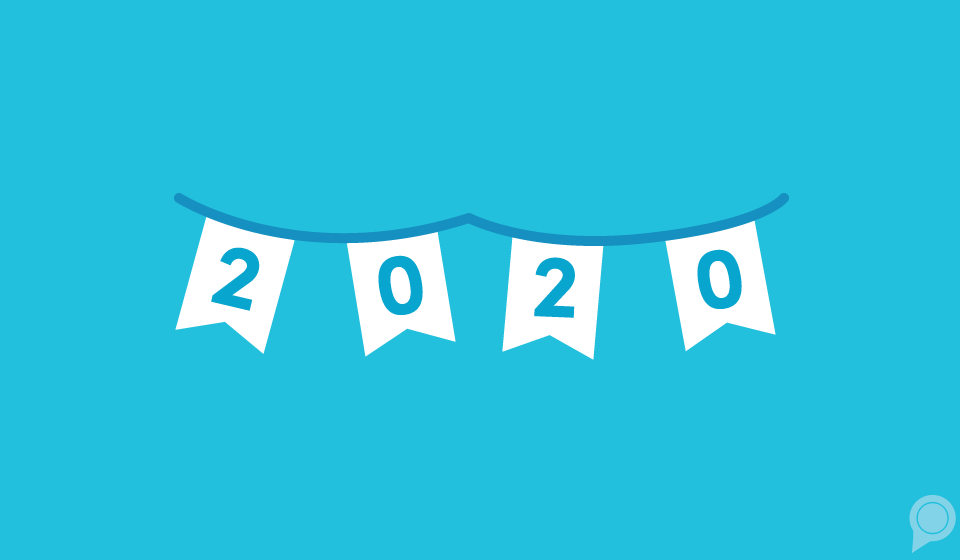

You’re not the only one looking to make changes in the new year. Google has started 2020 with a bang by rolling out new core updates, cookies regulations, search result designs and more for its users. Here are the changes to keep an eye out for!
January 2020 core update
At this point in your digital marketing endeavors, you are probably familiar with Google’s core updates!
Unlike some others, however, this upcoming update is broad and likely affects more organic searches. Google is not focusing on making specific changes as it did with optimizing for the BERT algorithm or indexing to remove bugs like it did in 2019.
The general update will allow for search rankings to change, either pushing up listings that have improved or did not exist during the last core update or moving down other listings that have not received as much user interest as they did before.
Google made it clear that moving up or down in rankings after this core update is not a determination of the content value on a particular page but rather an indication of if a page is meeting the current needs and wants of Google searchers.
The update is expected to be fully completed by the end of January.
Evaluate the performance of your rankings in the next few weeks and determine your best practices for continuing your upward momentum or improving upon a drop in your ranking.
Google’s search listing redesign is here
We mentioned back in May Google’s plans to add business icons and bolded ad labels next to Google search results, but now it is coming to fruition!
That’s right, it’s been months since Google first announced this change for mobile, but you can now look forward to it becoming a reality for desktop as well.
If one of your business resolutions for the year is to make your brand more recognizable to customers, this just might be your chance! With Google’s recent update, which places your brand’s icon front and center of search results (directly to the left of the website name), customers will have a consistent and identifiable way to recognize your business.
As for ads, they will no longer be identified with the green outline label you know. Instead, they will be featured in black bolded lettering next to the website URL like the brand icon. This helps users to identify the ads in their search results to assist in choosing the best business for them.
In addition to this implemented logo, search listing information is now arranged to place the website name above the search result’s title, unlike its former look, which did the opposite.
With the expansion of these updates to desktop, your business icon, search results, ads and website titles will be even more visible and reputable to Google users!
Goodbye to third-party cookies
Google is cutting the calories by phasing out their support for third-party cookies through Chrome.
Cookies have allowed third-parties (Web domains other than the one a user is visiting) to track a user’s browsing activities on websites, retargeting and more.
Google’s director for Chrome engineering told TechCrunch that by no longer allowing the use of cookies, Google is looking to make ‘privacy-preserving’ its default web standard.
Although this is not a surprising move for Google, what does come as a surprise is the timeline for this change. Google announced that starting in February, it will begin its efforts toward limiting the cross-site tracking that it has in the past.
This is not a complete overhaul, though, as Google has also made mention of its new privacy sandbox feature, which would allow for a balance in showing relevant ads while keeping browsing information as private as possible.
The big question is, however, what does this all mean for your business?
If you currently utilize third-party cookies via Google, you will need to re-evaluate your strategy for gathering user information and data as this will not be viable in the near future, but the future of a feature like the privacy sandbox could be a practical alternative.
For more guidance in navigating your advertising strategy with these impending changes, click here to request a demo.
Explore on Google Maps
Another update we touched on briefly in our latest podcast was the inclusion of tags on the ‘Explore nearby’ section of Google Maps.
What exactly are these tags?
They are categories that can fit the qualities of different businesses in the area. For example, if a potential customer is searching for a “cozy restaurant,” for example, they can go to the Explore nearby section and chose this category, which will then pull up local business results that fit this category.
This is especially beneficial when customers are looking for quick results while they are in the car.
So, if your business has certain qualities that attract customers, make sure your Google listing is optimized to include those keywords, so you come up in local search results.
Final Thoughts
Google updates can seem daunting and never-ending, but that’s why we have you covered with information on the latest, most relevant Google changes.
Check out our most recent Google-related blogs below and subscribe to the RevLocal blog to stay on top of the latest digital marketing trends, updates, industry news and more!
Subscribe to our email list to get the latest digital marketing content delivered to your inbox each week!